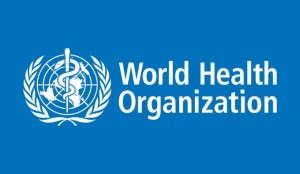The Ebola virus is shed in bodily fluids such as blood, vomit, faeces, saliva, urine, tears, and vaginal and seminal fluids. There is evidence that seminal fluids of convalescing men can shed the Ebola virus for at least 82 days after onset of symptoms. Although the scientific evidence is limited, it is clear that semen is a potential source of infection and could therefore cause transmission of the virus through delivery of the infectious virus on a mucosal surface.
1. How long is Ebola virus present in semen?
In a study performed during the Ebola outbreak in Gulu, Uganda, in 2000, the authors tested the semen of a single convalescent patient and were able to isolate Ebola virus up to 40 days after the onset of illness. One study in 1977 (Edmond et al., laboratory infection in England) detected live Ebola virus in semen of one convalescent man 61 days after onset of symptoms. One study in1995 (Rodriguez et al. Ebola outbreak in Kikwit, Democratic Republic of Congo) also detected live Ebola virus in semen in one convalescent man 82 days after disease onset. Therefore, it is possible for Ebola virus to be present in semen for 3 months after disease onset.
2. Is semen that tests positive for Ebola virus infectious?
The evidence is inconclusive. One study (Rowe et al.) that followed four men recovering from Ebola virus disease and their sexual partners found that no sexual partner developed symptoms.
Key Messages
*Sexual transmission of Ebola virus disease has not been documented
*In four studies that investigated persistence of Ebola virus in seminal fluid from convalescent patients (a total of 43 patients), three men who had recovered from Ebola virus disease were reported to shed live virus in semen 40 days, 61 days and 82 days after onset of symptoms, respectively.
*In two studies, Ebola virus was isolated from semen, but subsequent infections were not identified in household contacts.
*Men who have recovered from Ebola virus disease should be aware that seminal fluid may be infectious for as long as three months after onset of symptoms.
*Because of the potential to transmit the virus sexually during this time, they should maintain good personal hygiene after masturbation, and either abstain from sex (including oral sex) for three months after onset of symptoms, or use condoms if abstinence is not possible.
*WHO does not recommend isolation of male convalescent patients whose blood has been tested negative for EVD.
References
1. Bausch, D. et al. (2007) Assessment of the risk of Ebola virus transmission from bodily fluids and fomites, The Journal of Infectious Diseases, 196, pp. S142-7.
2. Emond, R. et al. (1977) A case of Ebola virus infection, British Medical Journal, 2, pp. 541-544.
3. Rodriguez, L. et al. (1999) Persistence and genetic stability of Ebola virus during the outbreak in Kikwit, Democratic Republic of Congo, 1995, The Journal of Infectious Diseases, 179(1), pp. S170-6.
4. Rowe, A. et al. (1999) Clinical, Virologic, and Immunologic Follow-up of Convalescent Ebola Hemorrhagic Fever Patients and their Household Contacts, Kikwit, Democratic Republic of the Congo, The Journal of Infectious Diseases, 179(1), pp.S28-35.









